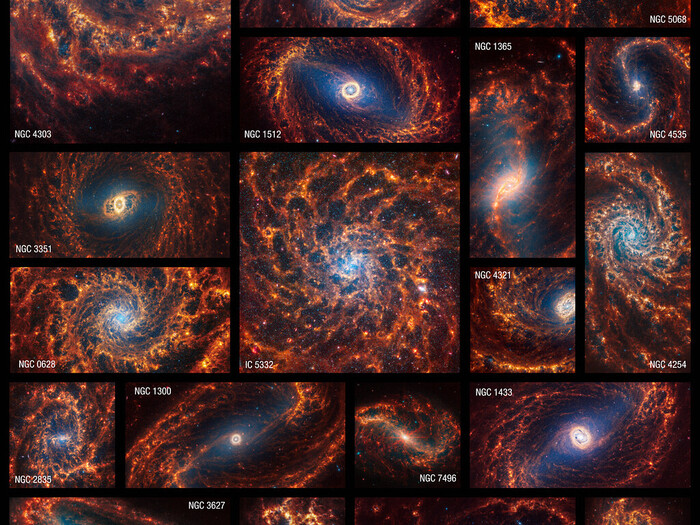The images of 19 spiral galaxies immortalized in unprecedented detail by the James Webb Space Telescope, operated by the space agencies of the United States, Europe and Canada, are truly hypnotic.
Galaxies are part of the universe closest to us and are rich in previously unseen details of stars, gas and dust which will provide valuable information on the structure of galaxies and the processes of star formation and evolution.
The images were published by the international collaboration Physics at High Angular resolution in Nearby GalaxieS (Phangs), supported by over 150 astronomers from around the world and which includes observations made across the entire electromagnetic spectrum with the largest observatories both on the ground and in space , including Alma, Vlt and Hst.
"The objective of the project is to study the star formation process, how this is influenced by the surrounding environment and vice versa, how star formation in turn influences it through so-called feedback processes", explains Francesco Belfiore of the INAF of Arcetri, the only researcher at the National Institute of Astrophysics involved in the Phangs project.
Also participating in the consortium is Mattia Sormani, who after ten years abroad is now a 'returning brain' in Italy: in the spring he will take up employment at the University of Insubria, in the Como branch, to study the transport of matter towards the center of the Milky Way and the feeding of black holes, a project for which he won the ERC Starting Grant 2023.
The surprising details of the galaxies present in the images are the result of the combination of data obtained in the near and medium infrared thanks to various instruments on board of the Webb telescope: NirCam has immortalized millions of stars visible in shades of blue, some of which are scattered in the spiral arms of galaxies or grouped in star clusters;
data from the Miri instrument, however, highlight the incandescent dust, showing the areas in which it is located around and between the stars.
At these wavelengths, stars that have not yet formed completely and remain enveloped in the gas and dust that fuel their growth are also visible in shades of red.
Among the structures recognizable in the images there are also large spherical shells in the gas and dust which could be the residue of explosions of one or more stars.
Reproduction reserved © Copyright ANSA

